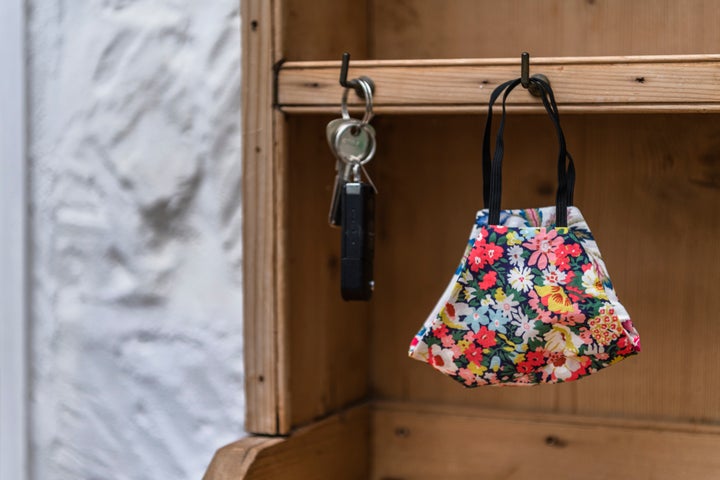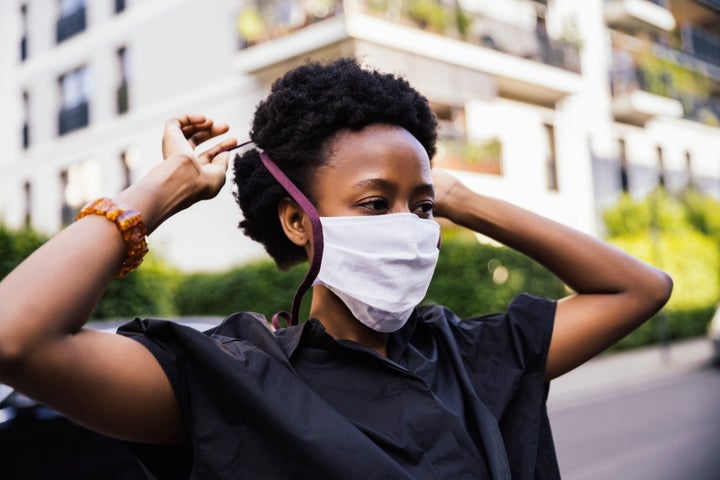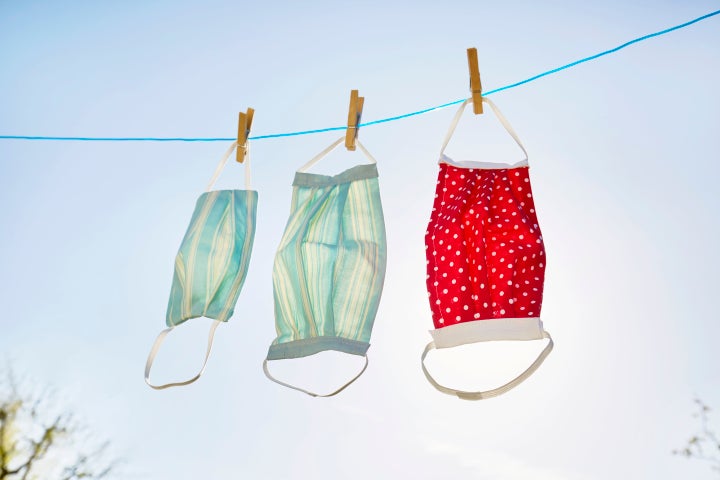Face masks have become a normal part of our daily lives as we navigate the COVID-19 pandemic. Just as you wouldn’t leave the house without your keys, phone and wallet, these days you wouldn’t walk out the door without a face covering in tow, too.
By now, we know which materials work well for face masks, and how to properly wear them and wash them. But what should you do with your face coverings when you’re not wearing them?
We asked infectious disease experts to share advice on how to safely store your cloth masks at home.
Designate a clean, dry place to keep your masks.
It could be in a separate drawer, breathable container or bag. Keep them away from other objects you touch frequently, potentially with unwashed hands, Peter Chin-Hong, an infectious diseases doctor and professor of medicine at the University of California, San Francisco, told HuffPost.
“For example, I won’t keep them in my underwear drawer or area where you handle kitchen towels,” he said. “Don’t go nuts about ensuring absolute sterility like if you are in a biosafety laboratory. The most important thing is to keep the clean cloth masks in an area that does not normally see a lot of hand traffic.”
If you have trouble remembering to bring a mask when you leave the house, you may want to keep clean ones near the front door, said Amanda Castel, professor of epidemiology at the George Washington University Milken Institute School of Public Health. Hang them on hooks by their ear straps so you can just grab one and go.

However you choose to store them, be sure not to mix your clean masks with the dirty ones. Designate another bag or bin for the used ones, perhaps labeling it to avoid confusion. Or you can toss them in the hamper with other dirty laundry.
Consider keeping clean masks separated by person, if possible.
“We focus on COVID, but there are 300 other viruses that cause the common cold,” Chin-Hong said. “It is just good infection control practice. If each member in the household handles their own clean stash, it reduces the risk of fomite transmission on potentially unclean hands that can transmit other common respiratory viruses as well.” (Fomite transmission is where you can get infected from a contaminated surface or object.)
Basically, if one of your kids rifles through the communal mask bag with unwashed hands, you don’t want him contaminating all of the other masks, too. But if keeping facial coverings for your family together in one bin is more manageable for you, that works, too.
“Alternatively, you can keep them in one place but have one household member in charge of distribution using good hand-washing practices prior to handling the masks,” Chin-Hong said.
Castel agreed that storing all of the clean masks together is fine. However, she does not recommend sharing masks with other members of your household.
Carry your mask in a paper bag when you’re on the go.
Don’t just throw it directly into your purse, pocket or backpack where it could get damp, rip or come in contact with contaminated items. Instead, with clean hands, place the mask in a clean paper lunch bag first. (You can also use a plastic Ziploc baggie as a backup.) Then you can toss it into your bag if you’d like.
“Consider carrying it in a small bag that can be closed so it stays clean, dry and does not get damaged,” Castel said. (Though, she said she typically just puts hers on before walking out the door.)

When you pull the mask out to put it on, always handle it by the ear loops or ties (and with clean hands, of course). Avoid touching the inside part of the mask that touches your face, what Chin-Hong refers to as the “inner sanctum.”
If you need to take the mask off temporarily while you’re out — perhaps at a restaurant or between stops while running errands — fold the mask in half and place it in the clean baggie for the time being. Some experts recommend folding it so that the inside part that touches your nose and mouth is facing inwards, while others recommend folding it the opposite way with the outside edges in towards each other.
“Wearing a mask is primarily meant to prevent you from infecting someone else, so if you assume [you’re] infectious, then the inside of the mask would be most contaminated. Therefore, it would make sense to fold it so that the inside is touching,” Castel said. “That said, there is also a chance that the outside of the mask has been contaminated by someone else’s droplets who was infectious, in which case you still want to be careful handling the outside of the mask. Regardless, try to keep the mask clean and wash your hands before and after handling it to reduce the risk of transmission.”
Don’t forget to wash your masks frequently.
Some experts say you can re-wear the same cloth mask multiple times in one day, as long as it’s not wet, soiled or torn. Others say you should play it safe and throw a used one in the laundry after each wear and grab a new one if you go out again.
“Simply putting it in the washing machine with the rest of the laundry and washing it in warm water is perfectly fine,” Chin-Hong said. “Dry in direct sunlight or on high heat. If you are washing the mask by hand, make sure you soak the cloth mask in bleach solution for five minutes, then rinse with water.”
You can make the solution with four teaspoons of bleach (use one that contains 5.25% – 8.25% sodium hypochlorite) per quart of room temperature water or one-third of a cup of bleach per gallon of room temperature water, according to the CDC.

Disposable face coverings, like surgical masks, should not be washed and reworn. Discard them after each use.
And remember that wearing a face covering should always be done in conjunction with other preventative measures.
“Don’t think of your mask as a forcefield against COVID – [it’s] important to practice the other protective interventions such as hand hygiene and social distancing as well,” Chin-Hong said.
Experts are still learning about COVID-19. The information in this story is what was known or available as of publication, but guidance can change as scientists discover more about the virus. Please check the Centers for Disease Control and Prevention for the most updated recommendations.